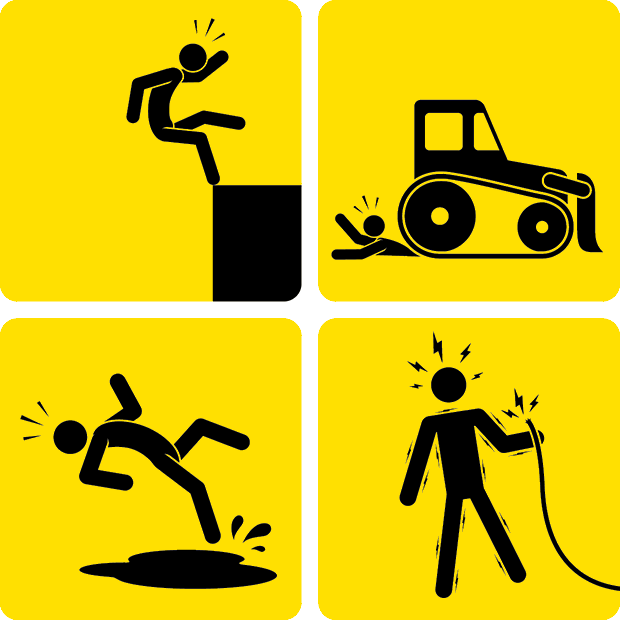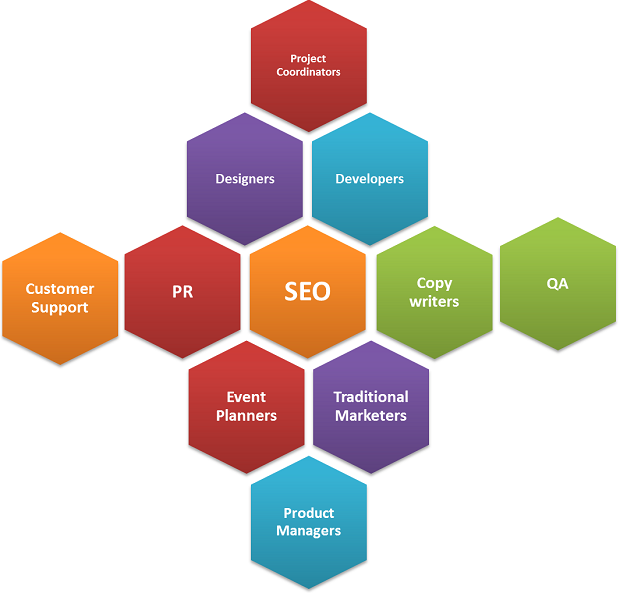
Deployment SEO Strategy and Checklist
Every time you have a release, do you have a test (automated or manual) that you perform to make sure that everything is good to go from an SEO perspective? This is what we call a deployment SEO strategy. Odds are you might not have one, but you should.
You need a deployment strategy for two reasons: first, accidents happen. Second, not everyone knows SEO. This posts highlights problems to look for when when you're testing a deployment and tips on how to create a deployment SEO strategy that works for you.
Accidents happen
Between consulting and my in-house experience, I have seen my fair share of accidents and mistakes.

Image via Shutter Stock Photos
Some of these accidents were my fault or responsibility, and some I happened to find along the way. The recurring issues I have seen include:
- Nofollows being added to all internal links
- Meta robots noindex added to pages
- Robots.txt updated to disallow: /
- All title tags being set to the homepage
- Product canonical tags set to category URLs
- 301s used for canonicalization being removed
- H1s disappearing
- Content disappearing
- URLs being changed
- Analytics tracking code removed
All of these issues can have significant impacts on SEO. The reasons for this are far and wide, ranging from the wrong code being copied from the dev server to designers forgetting that title tags are important. As SEOs, we can do things to reduce the likelihood of these things happening by creating systems and processes, but sometimes accidents will happen. Sometimes, something is bound to sneak by. This means you need to have a system in place to find problems when they arise rather than down the road.
Automated vs Manual
When I was working in-house, we had all of our internal links become nofollowed; the nofollow tag was copied over from a dev environment. After learning from this experience, I began doing manual testing following every deployment to ensure that each one was rolled out properly. With weekly releases and multiple sites, this task quickly became quite time consuming. Fortunately, we had a QA team that I trained to handle the testing themselves.
I started the manual reviews by going to pages that needed to be tested and verified that the SEO elements were all in proper place. To automate the process, I oversaw the development of test scripts built by the QA team to verify everything was in order. This was a much more efficient solution.
Big sites with frequent releases should be doing automated testing. Work with your dev team to get these tests created for you. Further, you should also have a QA team that should be capable of running the tests once they are trained. If you're unable to get the resources necessary, well...try to persevere until you can. You'll still have to do the work manually, but this issue is far too important to ignore. If you can gather the dev resources, you'll still need to perform manual tests until automated testing is created.
If you run a smaller site or don’t have frequent releases, manual testing is probably the better solution for you. Sure, it takes some time, but if you aren’t doing it every week, odds are the manual reviews won’t drive you insane.
Which pages to test
Do you need to test every page? In general, no. If your site runs off a CMS or a template, you should be testing every type of page (product, category, homepage, education pages, etc.). Additionally, if you have important landing pages that are one-off creations, you should test them as well.
Do I really have to do it every time?
Yes, you do. It is important. Again, you’re the SEO, and unfortunately you're to blame if something goes wrong.
Minimizing problems
Earlier we discussed that you can minimize the likelihood and frequency of problems by implementing systems and processes. Typically,creating these steps take two shapes: training and reviews.
Training
SEO impacts many different teams and job functions throughout a business. The impact ranges from developers and product managers to customer support. What this means for the SEO is that you have a fair amount of people who can either help you out a lot or make your life a lot more complicated. My advice is to use this cross-team collaboration to your advantage.

Obviously not all of the people in these positions needs to be well versed in SEO or have watched every Matt Cutts webmasters video, but it's probably important that they know how their roles can impact SEO. Discuss the impact each role has with your team to make sure everyone is on the same page, and it will help you define your strategy.
SEO sign-off
In addition to training, you should create SEO checkpoints in project processes where you (or another member of the SEO team) will have to sign-off that the project meets the SEO requirements you have established. I recommend implementing checkpoints as frequently as possible. This ensures that someone with an SEO mind has thought about the project at each step from idea to execution. This "big picture" mentality will not only help to prevent problems, but will help to capitalize on opportunities.
Deployment of an SEO checklist
The following is a basic list of SEO items to check in every deployment. Use it as a guide to what to look for in each deployment, and feel free to customize based on your specific needs.
On-site
.gif) Page titles exist and are correct
Page titles exist and are correct
.gif) H1s exist and are correct
H1s exist and are correct
.gif) Meta descriptions exist and are correct
Meta descriptions exist and are correct
.gif) Alt text is targeted
Alt text is targeted
.gif) Content exists and is correct
Content exists and is correct
.gif) Correct version of site is being shown to search engines (if you do that sort of thing)
Correct version of site is being shown to search engines (if you do that sort of thing)
.gif) Accessibility
Accessibility
.gif) Meta Robots are correct
Meta Robots are correct
.gif) Robots.txt file is correct
Robots.txt file is correct
Tracking
.gif) Analytics code is correct on every page (type)
Analytics code is correct on every page (type)
.gif) Ecommerce tracking is properly set up
Ecommerce tracking is properly set up
Technical
.gif) Canonical tag is correct
Canonical tag is correct
.gif) Internal links are followed (unless otherwise stated)
Internal links are followed (unless otherwise stated)
.gif) 301 redirects are in place
301 redirects are in place
.gif) Site is canonicalling properly
Site is canonicalling properly
.gif) URLs are absolute (or there are no problems with relative URLs)
URLs are absolute (or there are no problems with relative URLs)
.gif) http:// / https:// are correct
http:// / https:// are correct
.gif) Response codes are correct
Response codes are correct
Other
.gif) Sharing functionality exists
Sharing functionality exists
I'd love to hear your tips on what deployment SEO strategies work for you. Feel free to share your knowledge in the comments below.
The author's views are entirely their own (excluding the unlikely event of hypnosis) and may not always reflect the views of Moz.



Comments
Please keep your comments TAGFEE by following the community etiquette
Comments are closed. Got a burning question? Head to our Q&A section to start a new conversation.